Interactive Tables and Charts
JAXA Workforce, 2012-2022
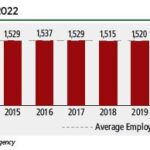
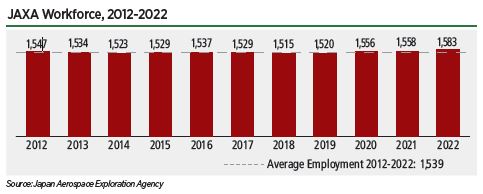
The Japan Aerospace Exploration Agency (JAXA) employed 1,583 people at the end of 2021, an increase of 1.6% from 1,558 employees at the end of 2020. Approximately 70% of JAXA employees work in engineering and research, with the remainder focused on education and administration. JAXA does not face the same demographic challenges as some other space agencies: 22.0% of its workforce is under 35 years old and 17.9% is over 54.
Japanese Space Industry Employment, 2010-2020
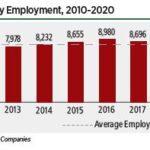
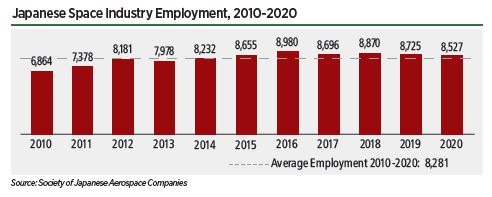
The Society of Japanese Aerospace Companies reports that the Japanese space sector employed 8,527 individuals in 2020, the most recent year for which data is available. This is a 2.3% decrease from the 2019 total of 8,725 employees. More than 70% of these employees work in the space vehicles sector, which includes launch vehicles, satellites, and the international space station. The remaining employees work on ground facilities and software relevant to space. Slight decreases in employment occurred across all portions of the space sector.
European Space Industry Employment, 2011-2021
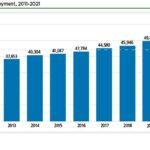
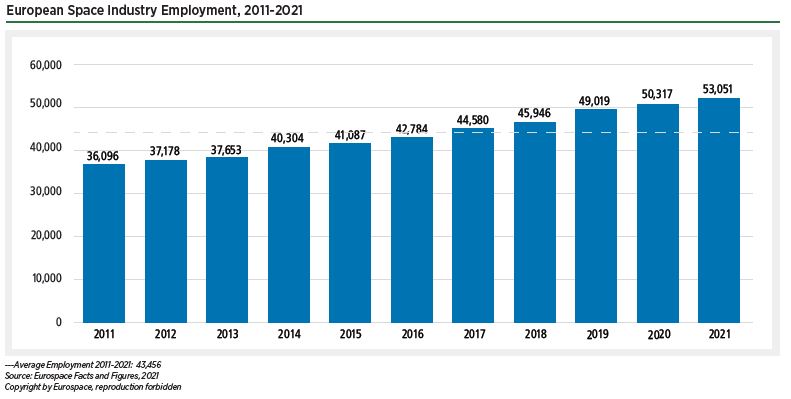
European space employment was 53,051 in 2021, an increase of 5.4% from the total of 50,317 from 2020. This estimate is based on analysis by Eurospace, the trade association of the European Space Industry. The analysis focuses on the space manufacturing industry; space services companies such as Ariane- space, SES, Eutelsat, and Inmarsat which also employ thousands of individuals, are not included.
Change in U.S. Private Employment, Aug. 2021-Aug. 2022
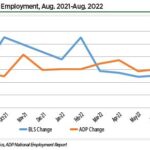
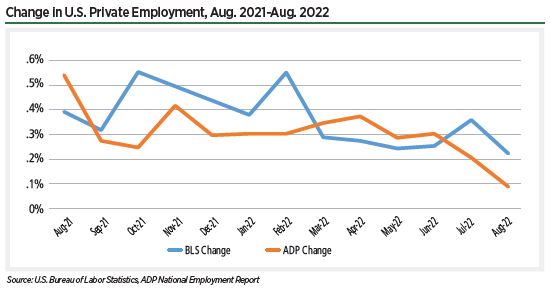
Unlike the BLS data, ADP’s employment data for July grew at a sluggish rate of 0.2%, and both BLS and ADP data for August jobs grew much less than the rest of the year. The BLS’s 0.2% growth was its lowest since April 2021. ADP’s 0.1% growth was the lowest since January 2021, when it measured a 0.1% decrease in employment.
Civil Space Spending in Africa (USD), 2021
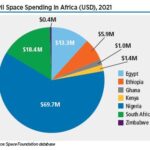
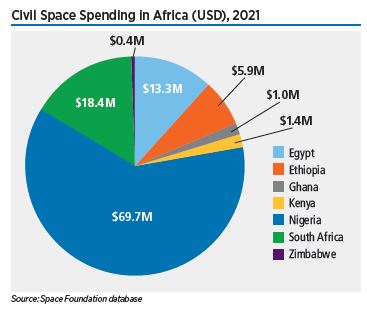
Although the continent’s total space spending is a small fraction of global spending, Africa is quickly becoming a space powerhouse. The African Union’s Agenda 2063 includes the Africa Outer Space Strategy as one of 15 flagship projects “to [accelerate] Africa’s economic growth and development.”
Space Insurance Industry Estimates, 2001-2021
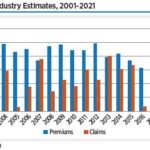
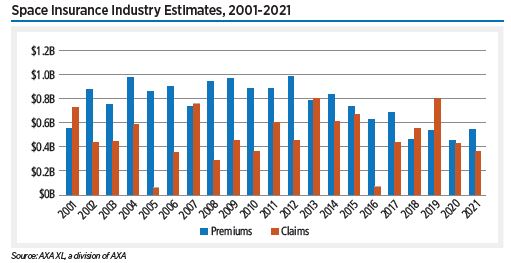
In 2021, despite high-profile insurance claims on numerous satellites. . . Net premiums totaled $537 million, and incurred losses were $362 million.
Spacecraft Value by Market, 2017-2021
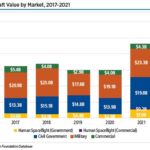
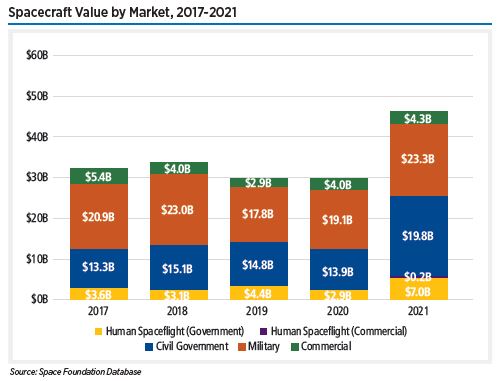
Commercial spacecraft manufacturing revenue was estimated to be $4.3 billion in 2021, an increase of 6% over the estimated $4 billion in revenue in 2020. The growth from 2020 to 2021 reflects the increase in the number of payloads launched, while also recognizing efficiencies and cost-savings achieved by companies utilizing small satellite technology and mass manufacturing techniques.
Orbital Launch Attempts, 2021
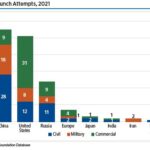
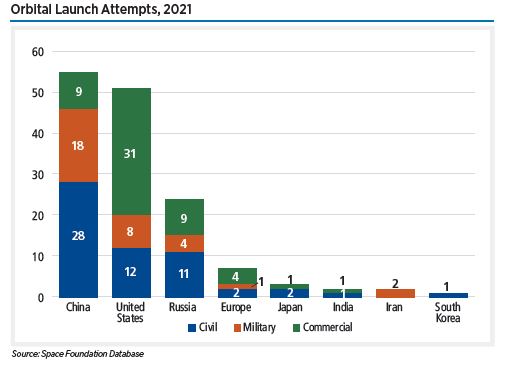
Of the 55 commercial launches attempted in 2021, 31 occurred in the United States. Of these, 23 were carried out by SpaceX, all of which were successful. China and Russia each conducted nine commercial launches in 2021. All six Russian launches were conducted on the Soyuz launch vehicle, and all were successful.
Launch Services Value by Market, 2017-2021
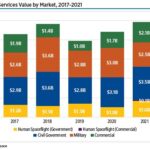
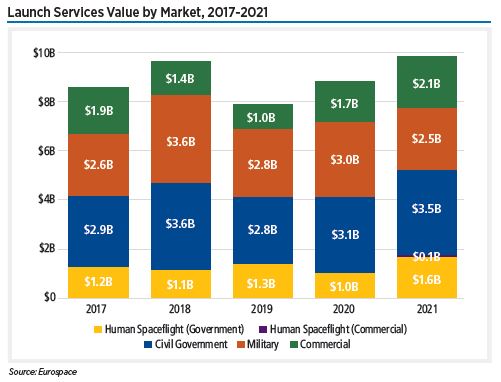
There were 145 launch attempts in 2021, 135 of which were fully or partially successful. This is an increase of 27% from 2020, when 114 launch attempts took place. Commercial launches —those carried out for a non-government customer — accounted for 55 attempts, 49 of which were successful.
Non-NASA U.S. Civil Space Spending by Agency, 2020-2022
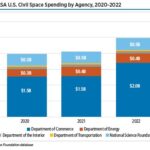
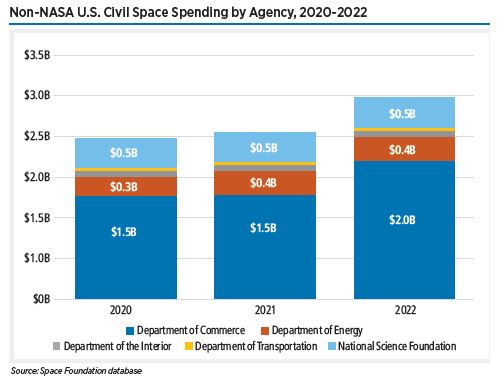
Civil government spending in the U.S. increased 3%. The Department of the Interior’s space budget was held flat in 2021, while the Department of Commerce and the National Science Foundation only increased spending by 1% and 0.3%, respectively. The Department of Transportation, which has the smallest share of U.S. civil space spending, had its budget slashed by 21% in 2021.